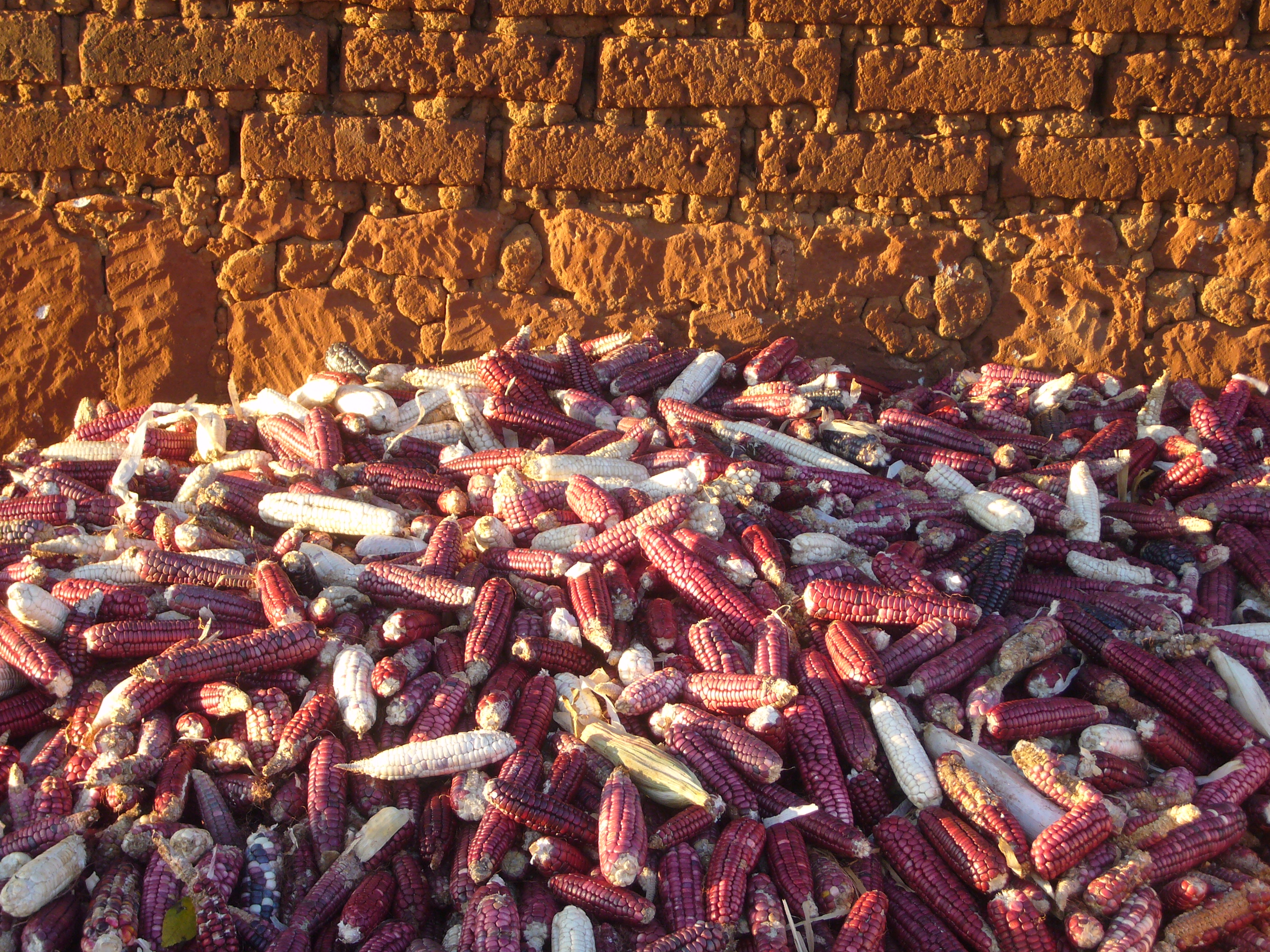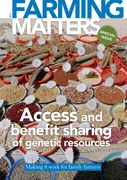International treaty on plant genetic resources for food and agriculture
References
Greiber, T., Peña Moreno, S., Åhren, M., Nieto Carrasco, J., Kamau, E.C., Cabrera Medaglia, J., Oliva, M.J., Perron-Welch, F., in cooperation with Ali, N. and Williams, C. 2012. An explanatory guide to the Nagoya Protocol on Access and Benefit-sharing. International Union for Conservation of Nature, Gland, Switzerland.
Available: An Explanatory Guide to the Nagoya Protocol on Access and Benefit-sharing (PDF)
This comprehensive guide introduces the concepts of access and benefit sharing and the road that led to the Nagoya Protocol and then presents and explains the 36 articles of the Nagoya Protocol in detail. The full text of the Nagoya Protocol is included as an annex.
Halewood, M., Andrieux, E., Crisson, L., Gapusi, J.R., Mulumba, J.W., Koffi, E.K., Dorji, T.Y., Bhatta, M.R., Balma, D. 2013. Implementing ‘mutually supportive’ access and benefit sharing mechanisms under the Plant Treaty, Convention on Biological Diversity, and the Nagoya Protocol. Law, Environment and Development Journal 9(1): 68.
This article sets out the fundamental issues that must be addressed and the steps that national policymakers must follow when implementing ITPGRFA’s multilateral system of access and benefit sharing. It identifies the main points of intersection, at the national level, between the ITPGRFA’s multilateral system and laws to implement access and benefit-sharing norms under the CBD. It analyses the hazards that can result from the mismanagement of that interface and offers recommendations for overcoming these hazards to ensure that access and benefit-sharing systems under the ITPGRFA and CBD are mutually supportive.
Halewood, M. (editor). 2015. Mutually supportive implementation of the Plant Treaty and the Nagoya Protocol: a primer for National Focal Points and other stakeholders. Discussion draft. Bioversity International, Rome, Italy.
Available: Mutually supportive implementation of the Plant Treaty and the Nagoya Protocol
This report presents the results of a series of activities (survey, workshop, post-workshop analysis) aimed at producing a tool to support implementation of the ITPGRFA and the Nagoya Protocol. It includes a series of scenarios and options for improved coordination in implementation.
Halewood, M. and Vernooy, R. (2014). Strengthening capacities to implement the multilateral system of access and benefit-sharing: efforts under way and challenges encountered in Bhutan, Burkina Faso, Costa Rica, Cote d’Ivoire, Guatemala, Nepal, Rwanda and Uganda. In Dasgupta, S. and Roy, I. (eds.) Enhancing understanding and implementation of the International Treaty on Plant Genetic Resources for Food and Agriculture in Asia (GCP/RAS/284/JPN), Report of the First National Focal Point Meeting of the Project, 27-28 May 2013. FAO Regional Office for Asia and the Pacific, pp. 74-79.
Report: Report of the First National Focal Point Meeting of the project (PDF)
International Treaty on Plant Genetic Resources for Food and Agriculture. (2009). Rome, Italy.
Article: International Treaty on Plant Genetic Resources for Food and Agriculturety (PDF)
The objectives of this Treaty are the conservation and sustainable use of plant genetic resources for food and agriculture and the fair and equitable sharing of the benefits arising out of their use, in harmony with the Convention on Biological Diversity, for sustainable agriculture and food security. These objectives will be attained by closely linking this Treaty to the Food and Agriculture Organization of the United Nations and to the Convention on Biological Diversity.
Jingsong Li (2012) Inducing multi-level institutional change through participatory plant breeding in southwest China. Wageningen University and Research Centre, Wageningen, the Netherlands, PhD thesis.
Article: Inducing multi-level institutional change through participatory plant breeding in southwest China. (PDF)
Jingsong Li, Leeuwis, C., Lammerts van Bueren, E.T., Yiching Song, Jiggins, J. (2012) ‘Contribution of action researching to institutional innovation: a case study of access and benefit sharing (ABS) mechanisms in the participatory plant breeding (PPB) in Southwest China.’ International Journal of Agricultural Resources, Governance and Ecology 9 (3/4): 204-227.
López Noriega, I., Wambugu, P., Mejías, A. 2013. Assessment of progress made to make the multilateral system functional: incentives and challenges at the country level. In: Halewood, M., López Noriega, I., Louafi, S. (editors). Crop genetic resources as a global commons: challenges in international law and governance. Routledge, Oxon, UK and New York, USA. pp. 199–225.
Available: Crop Genetic Resources as a Global Commons
This chapter assesses the progress made (as of 2013) in national-level implementation of the multilateral system, the incentives that encourage users to become full participants in the system, and the challenges or disincentives encountered.
Moore, G., Tymowski, W. 2005. Explanatory guide to the International Treaty on Plant Genetic Resources for Food and Agriculture. International Union for Conservation of Nature, Gland, Switzerland.
Available: Explanatory guide to the International Treaty on Plant Genetic Resources for Food and Agriculture
This comprehensive guide describes the special nature of plant genetic resources for food and agriculture and the origins of the ITPGRFA; it summarises the main components of the ITPGRFA and describes and explains its 35 articles. The complete text of the ITPGRFA is included as well.
Song, Yiching, Jingsong Li and Vernooy, R., with the collaboration of the Guangxi-based research team of plant breeders and farmers and the Beijing-based policy makers (2012) ‘China: designing policies and laws to ensure fair access and benefit sharing of genetic resources and participatory plant breeding products.’ In M. Ruiz and R. Vernooy (eds) The custodians of biodiversity: sharing access to and benefits of genetic resources. Earthscan from Routledge, Oxon, UK and New York, USA, pp. 94-120.
Available: The custodians of biodiversity: sharing access to and benefits of genetic resources. (PDF)
Song, Yiching and Vernooy, R. (eds) (2010) Seeds and synergies: Innovating rural development in China. Practical Action Publishing, Burton on Dunsmore, UK and International Development Research Centre, Ottawa, Canada.
Available: Seeds and synergies: Innovating rural development in China
Swiderska, K., Argumedo, A., Song Y., Li, J., Pant, R., Herrera, H., Mutta, D., Munyi, P., Vedavathy, S. 2009. Protecting community rights over traditional knowledge: implications of customary laws and practices. Key findings and recommendations 2005–2009. International Institute for Environment and Development, London, UK.
This publication presents results from original research in China, India, Kenya, Panama, and Peru on novel tools to protect traditional knowledge rooted in customary laws and practices rather than based on existing intellectual property rights. The focus is on collective rights instead of individual rights.
Vernooy, R., Ruiz, M. 2013. Access to and benefit sharing of plant genetic resources: novel field experiences to inform policy. Resources 2(2): 96–113.
Available: Access to and Benefit Sharing of Plant Genetic Resources: Novel Field Experiences to Inform Policy
This article presents short case studies from China, Cuba, Honduras, Jordan, Nepal, Peru, and Syria offering promising examples of novel access and benefit-sharing practices of local and indigenous farming communities. The examples are linked to new partnership configurations of multiple stakeholders interested in supporting these communities. The full-length case studies can be found in the following book.
Vernooy, R., Sthapit, B., Galluzzi, G., Shrestha, P. (2014). The multiple functions and services of community seed banks. Resources 3(4): 636-656.
Available: The Multiple Functions and Services of Community Seedbanks
Ruiz, M., Vernooy, R. (editors). 2012. The custodians of biodiversity: sharing access to and benefits of genetic resources. Earthscan, Oxon, UK, and International Development Research Centre, Ottawa, Canada.
Available: The custodians of biodiversity: sharing access to and benefits of genetic resources
Additional Websites
- http://www.bioversityinternational.org/research-portfolio/policies-for-plant-diversity-management/
- http://www.bioversityinternational.org/research-portfolio/policies-for-plant-diversity-management/mutual-implementation-of-nagoya-protocol-and-plant-treaty/
- https://grpi2.wordpress.com/
- http://www.bioversityinternational.org/research-portfolio/conservation-of-crop-diversity/community-seedbanks/


